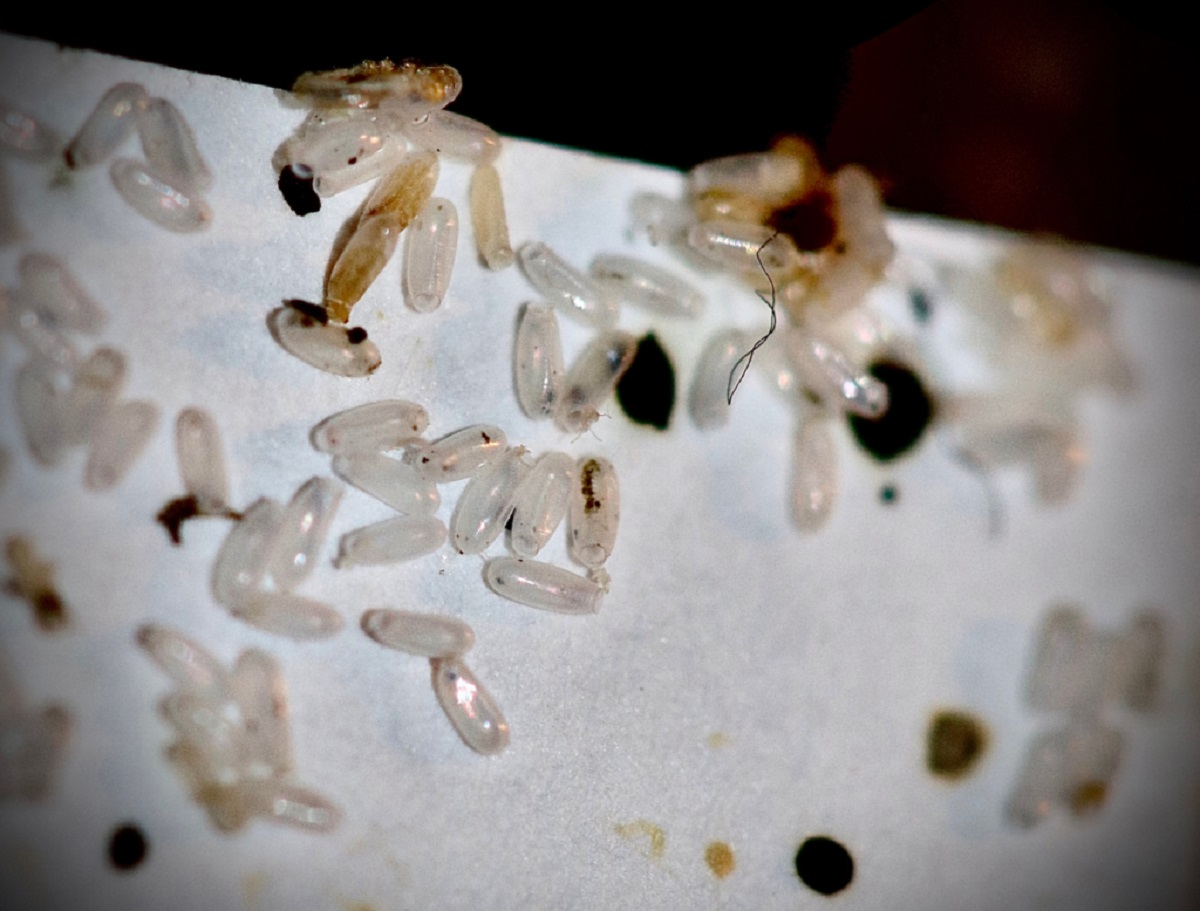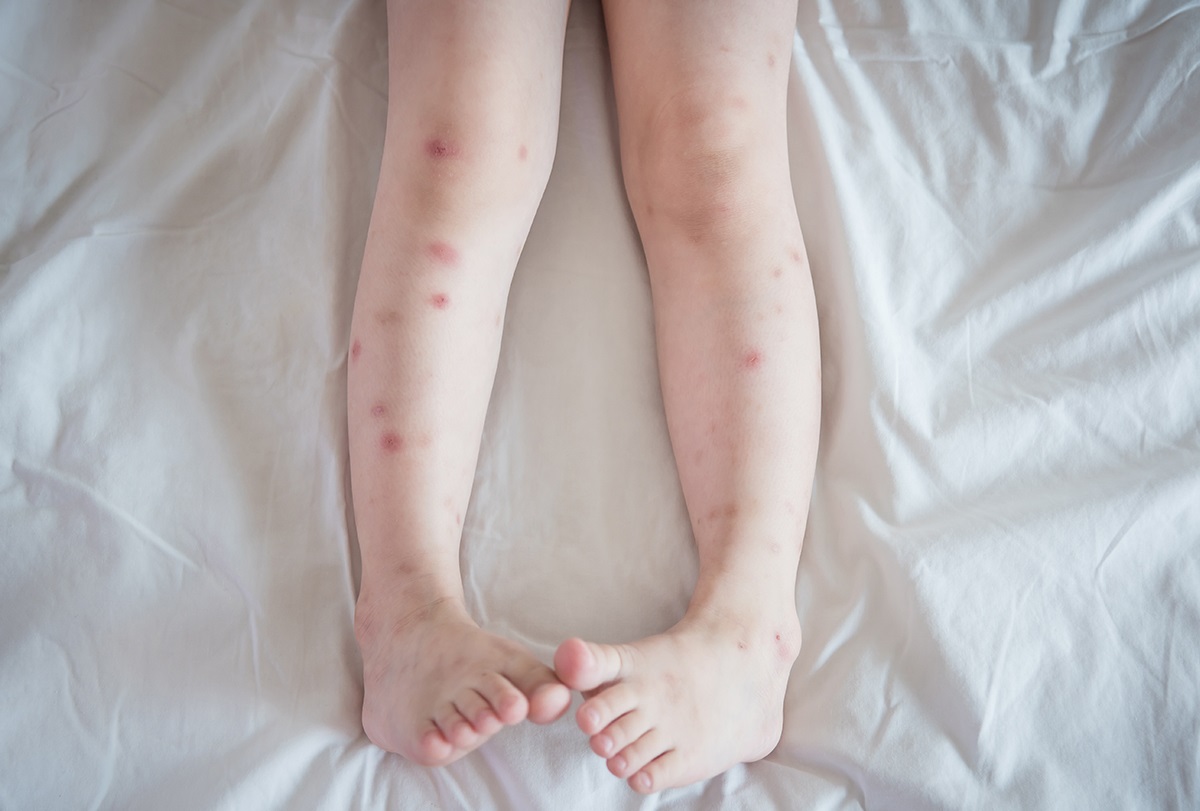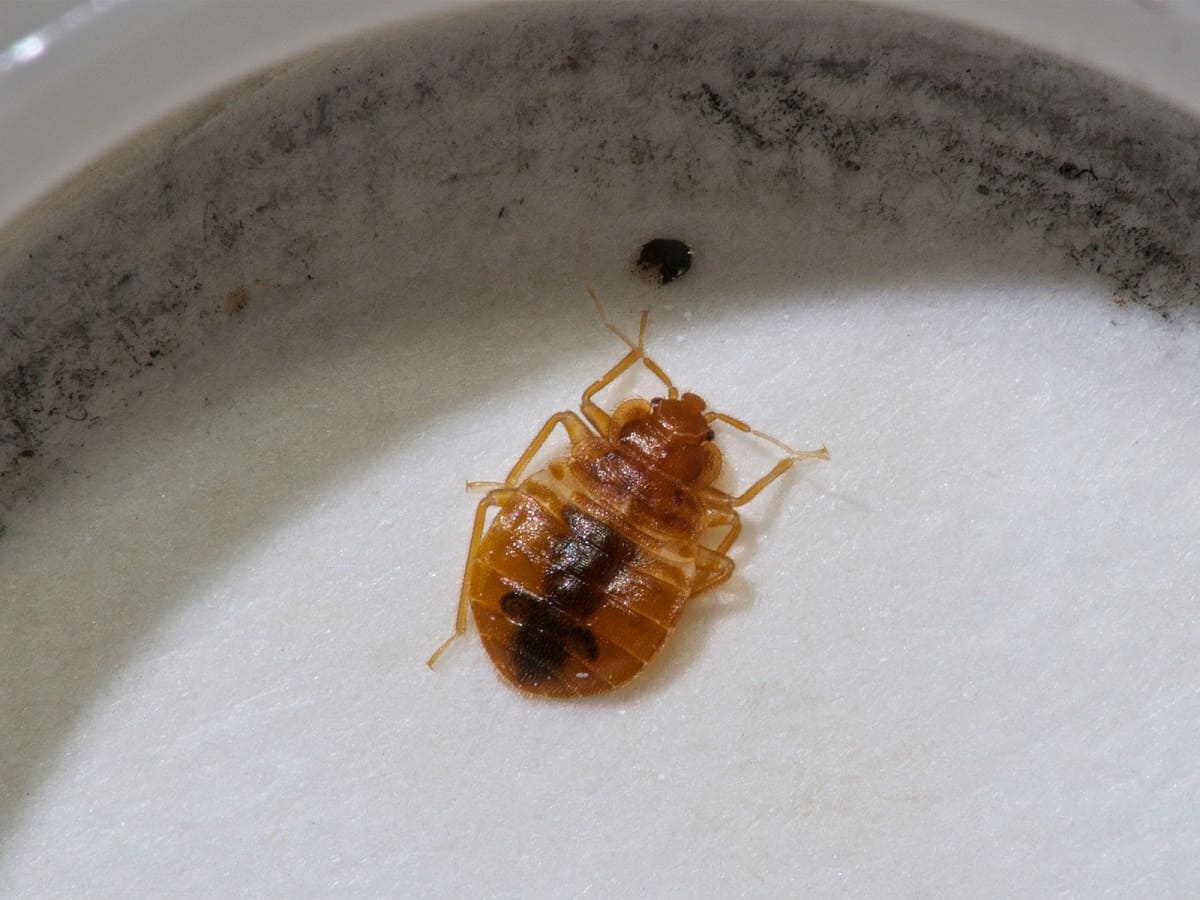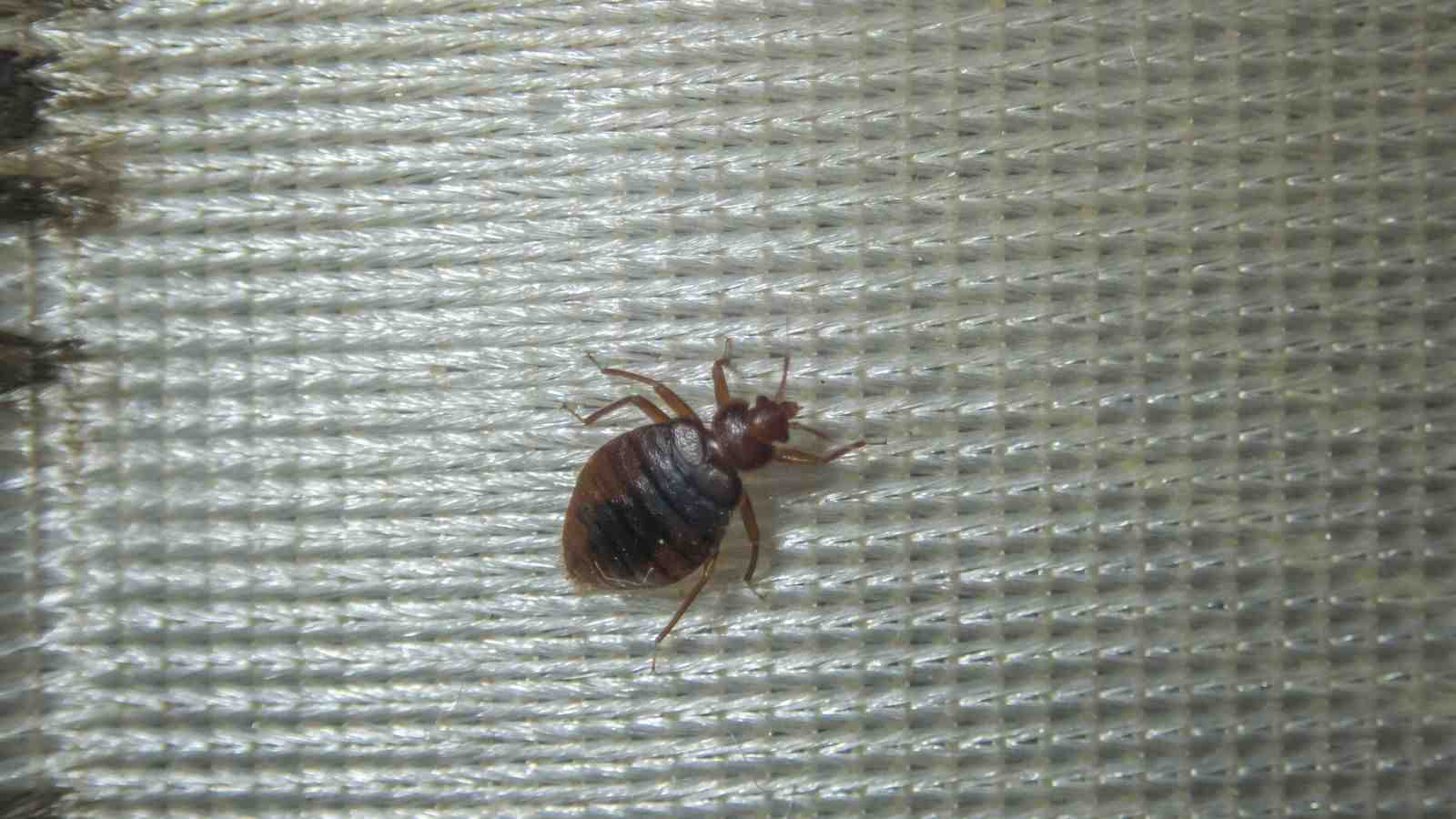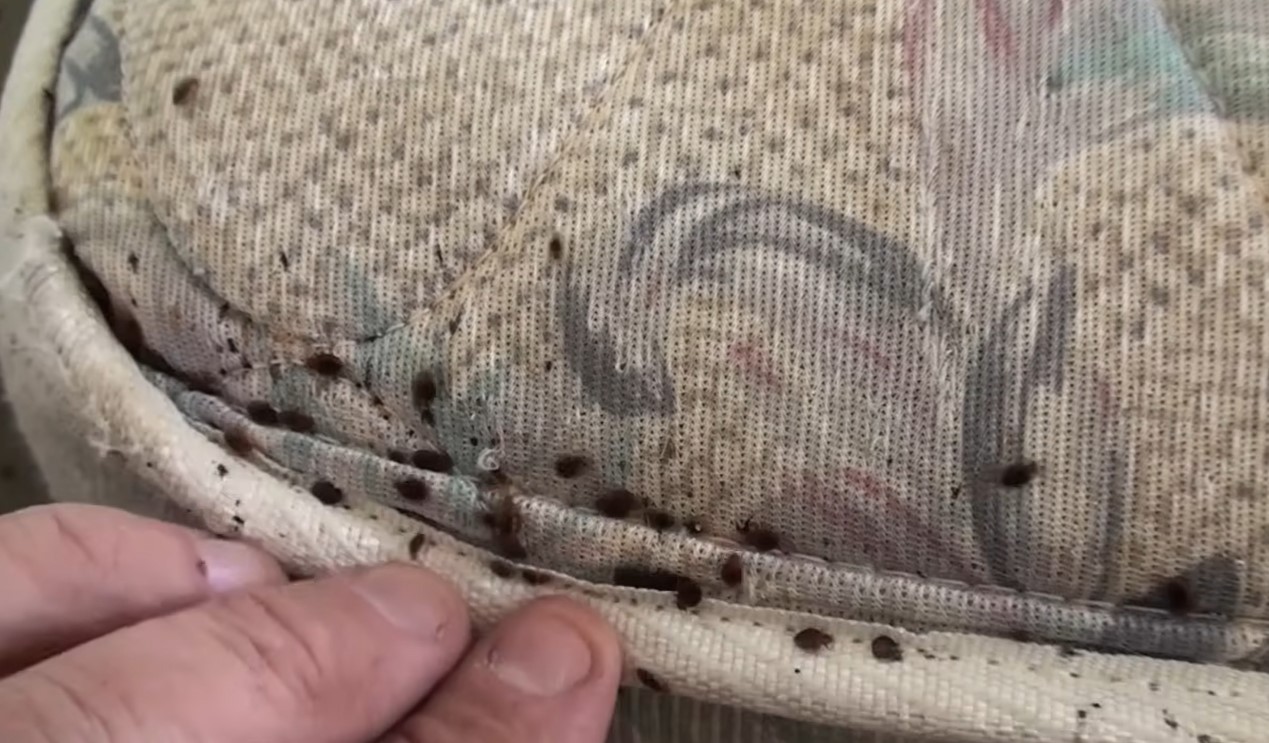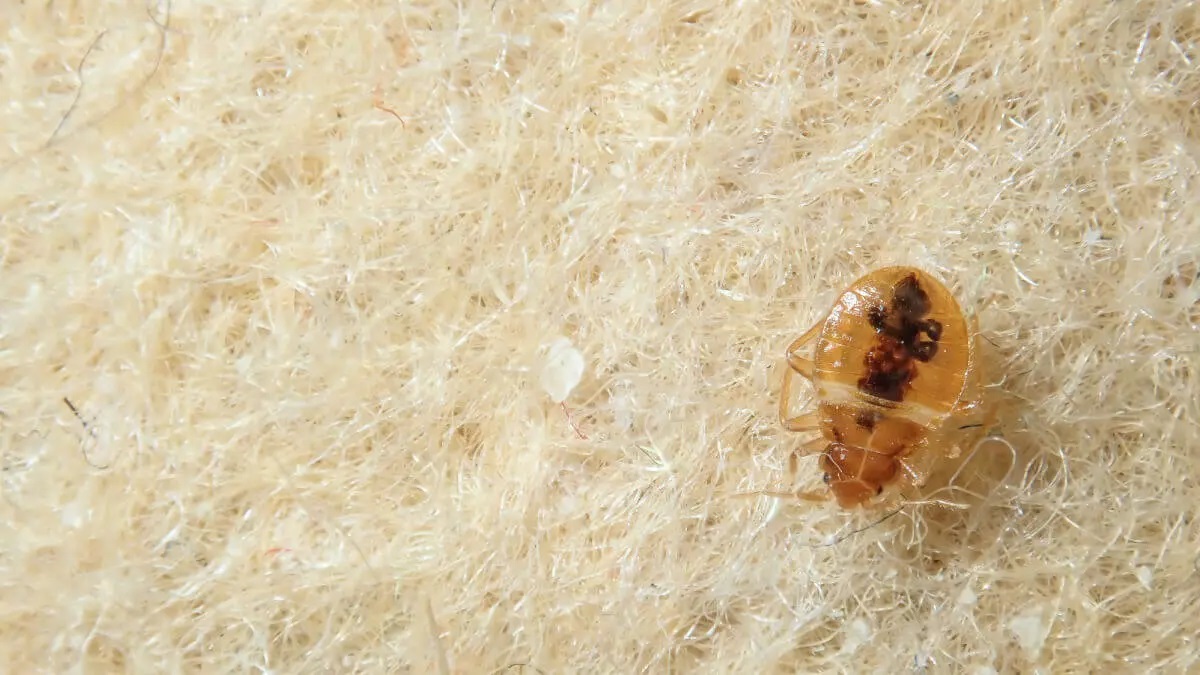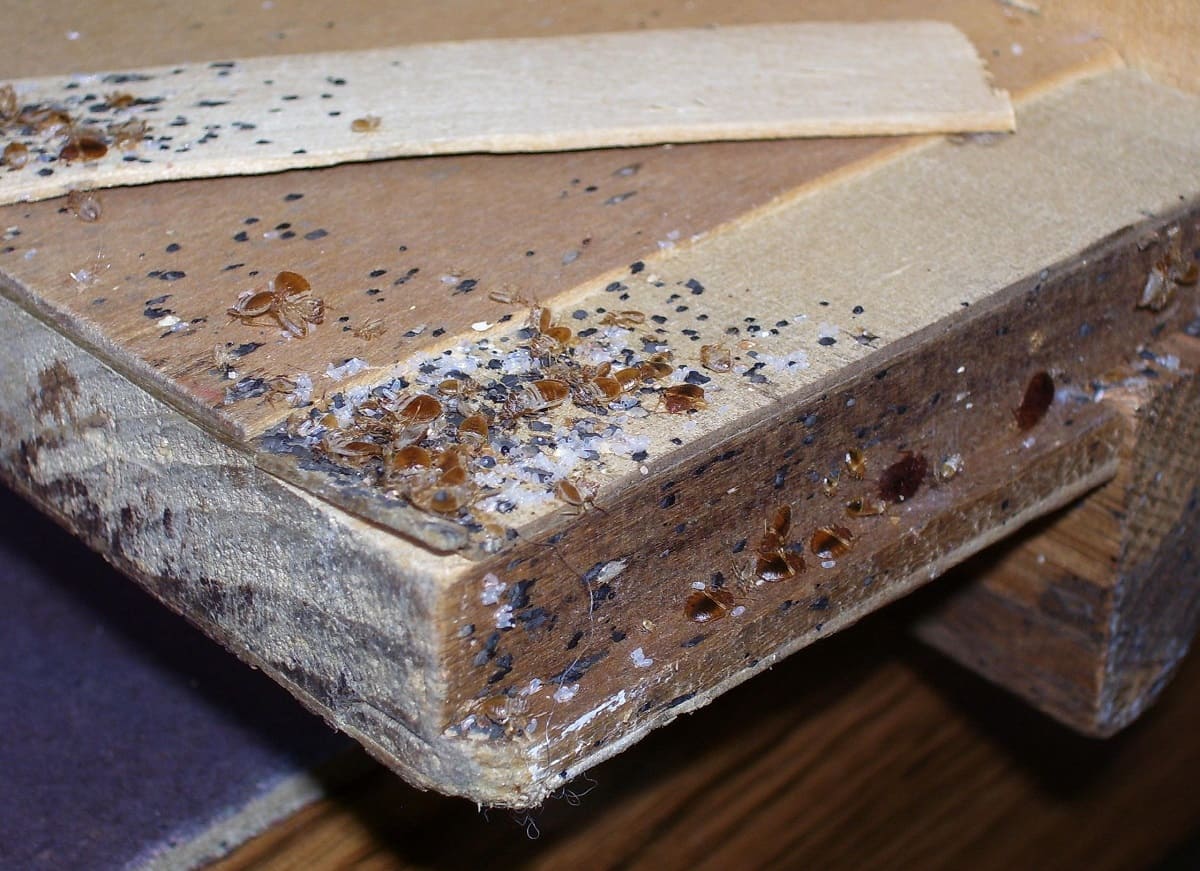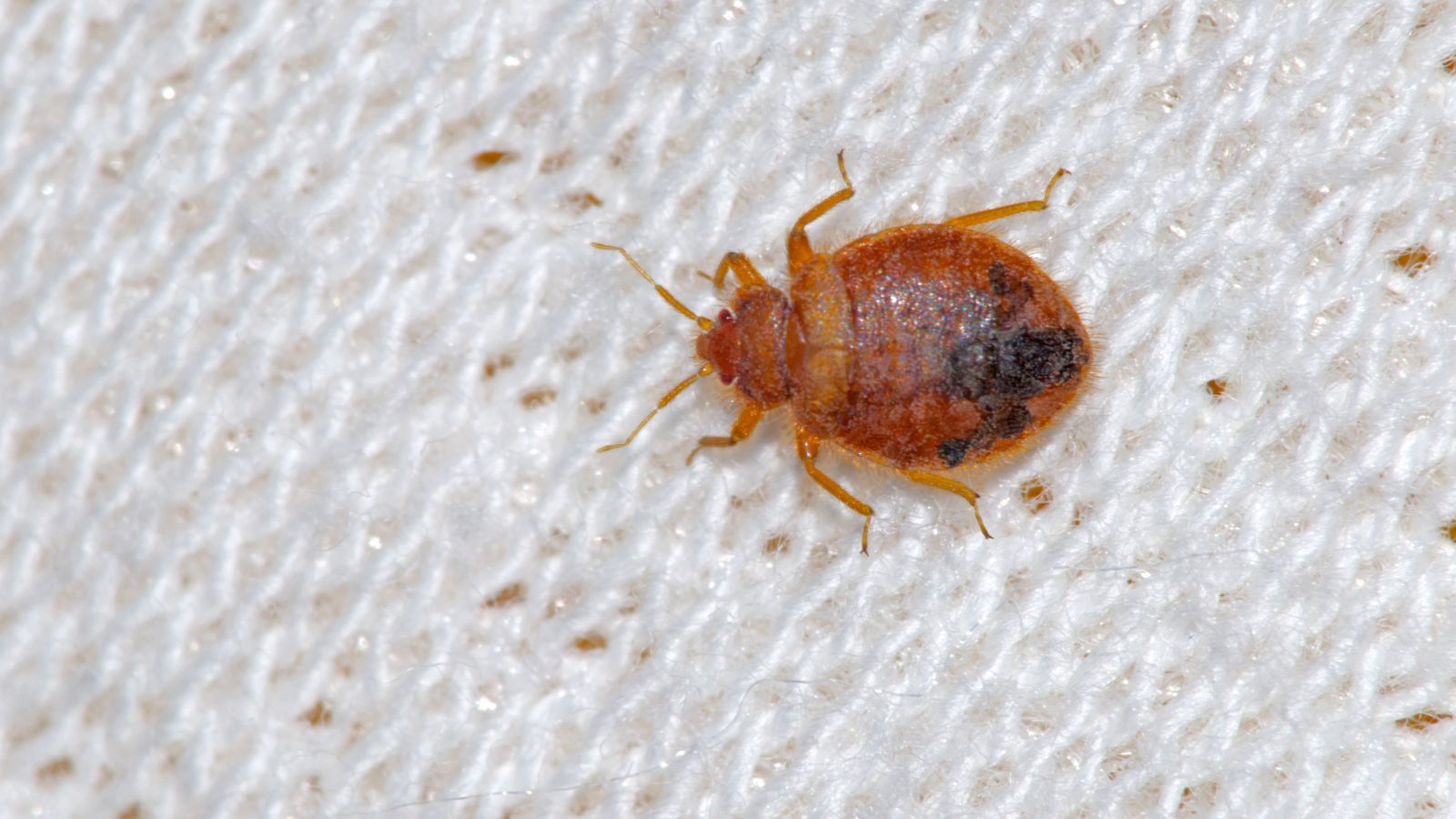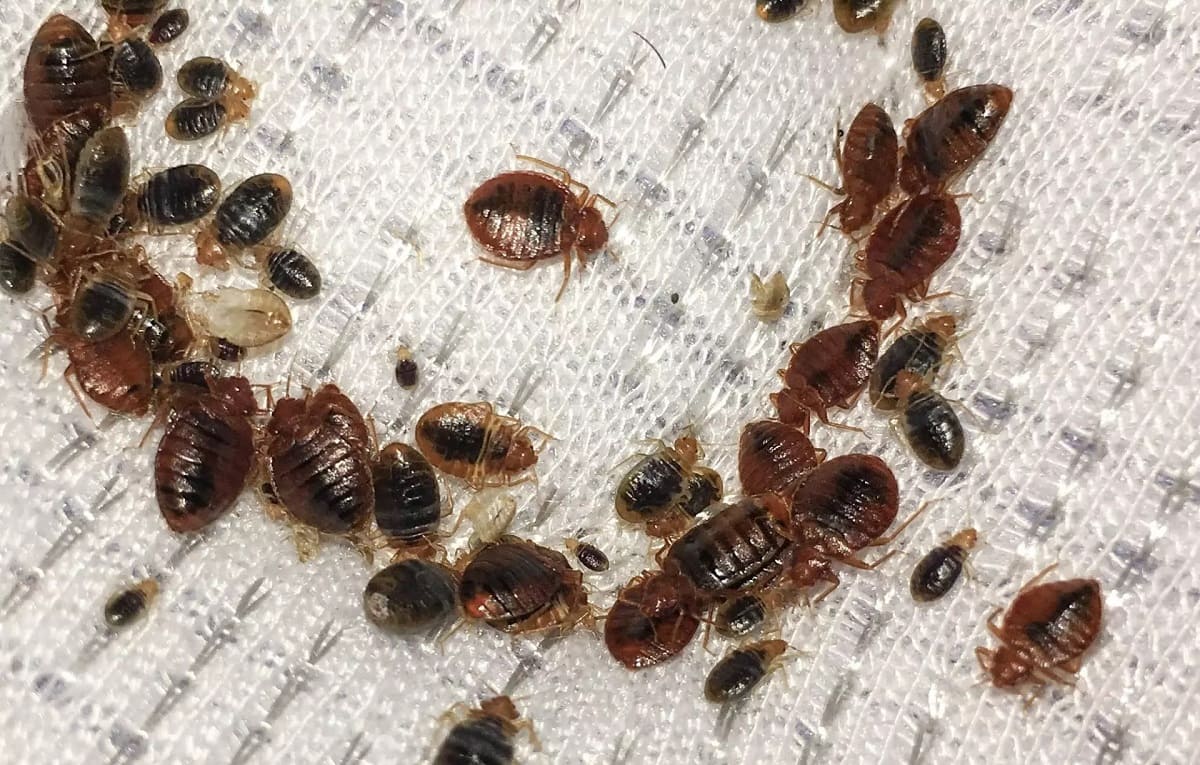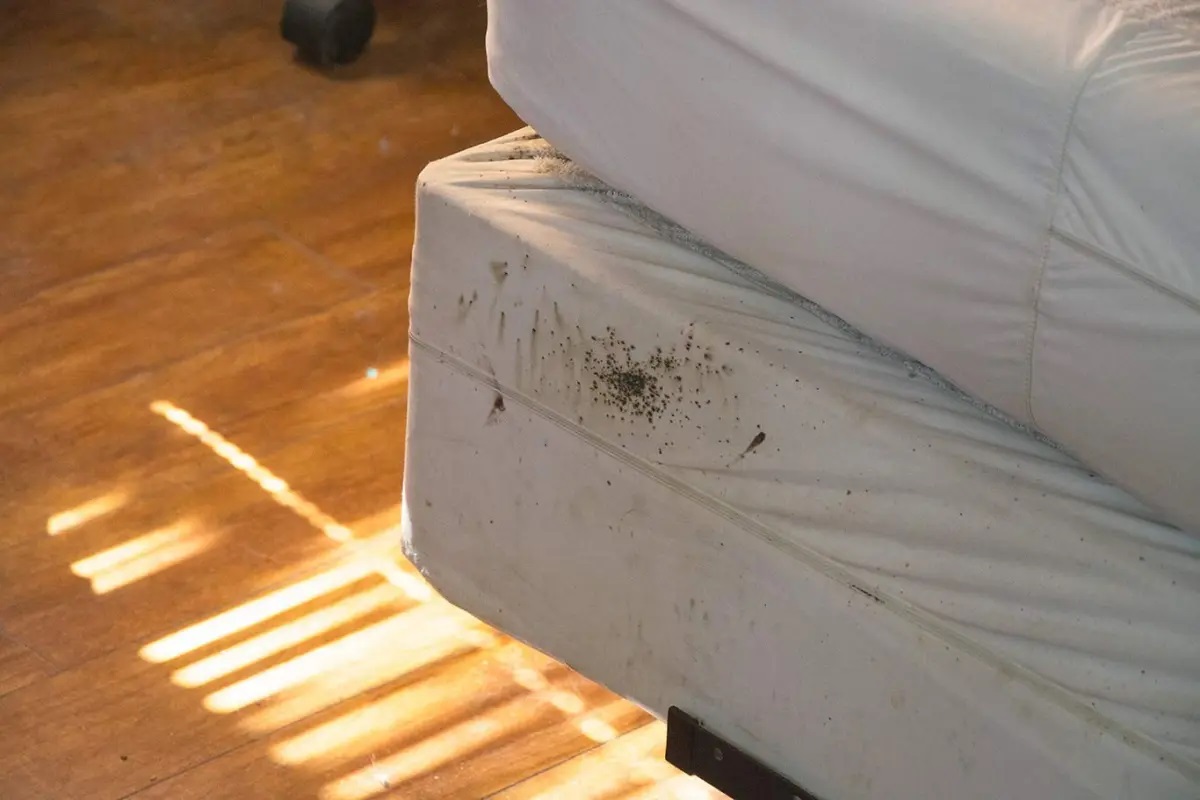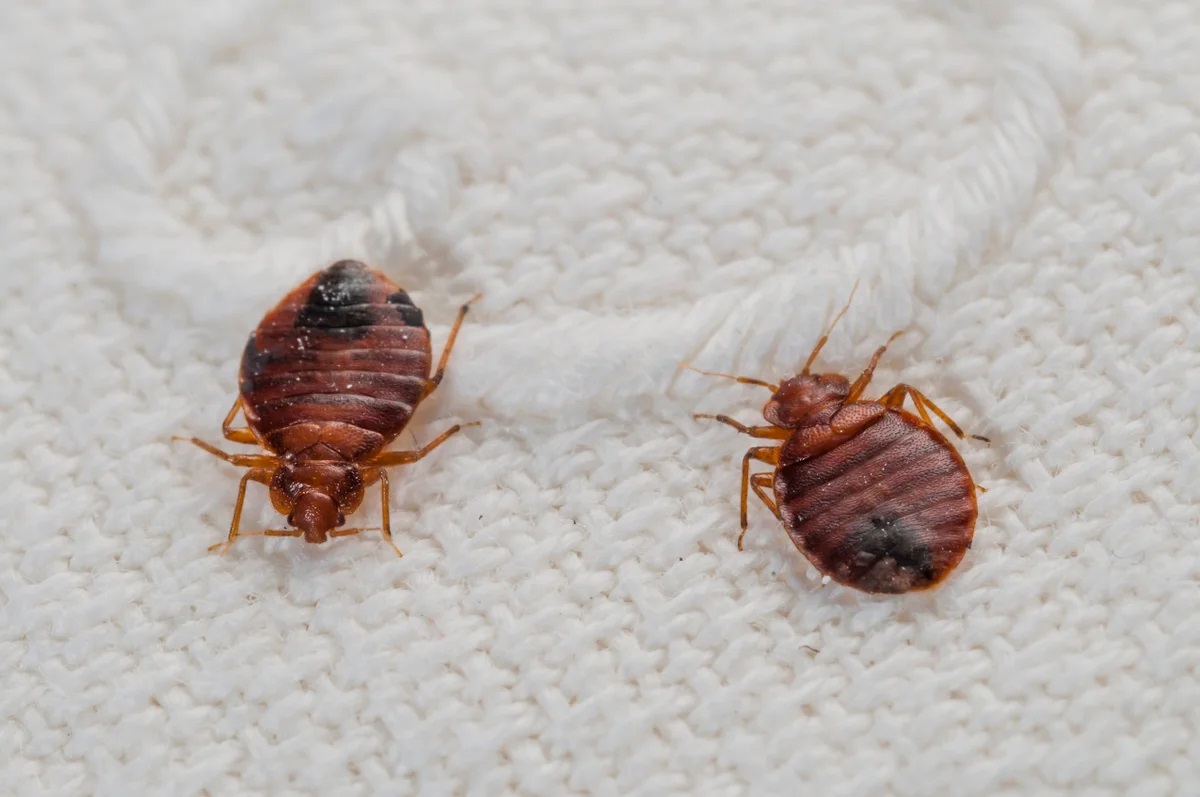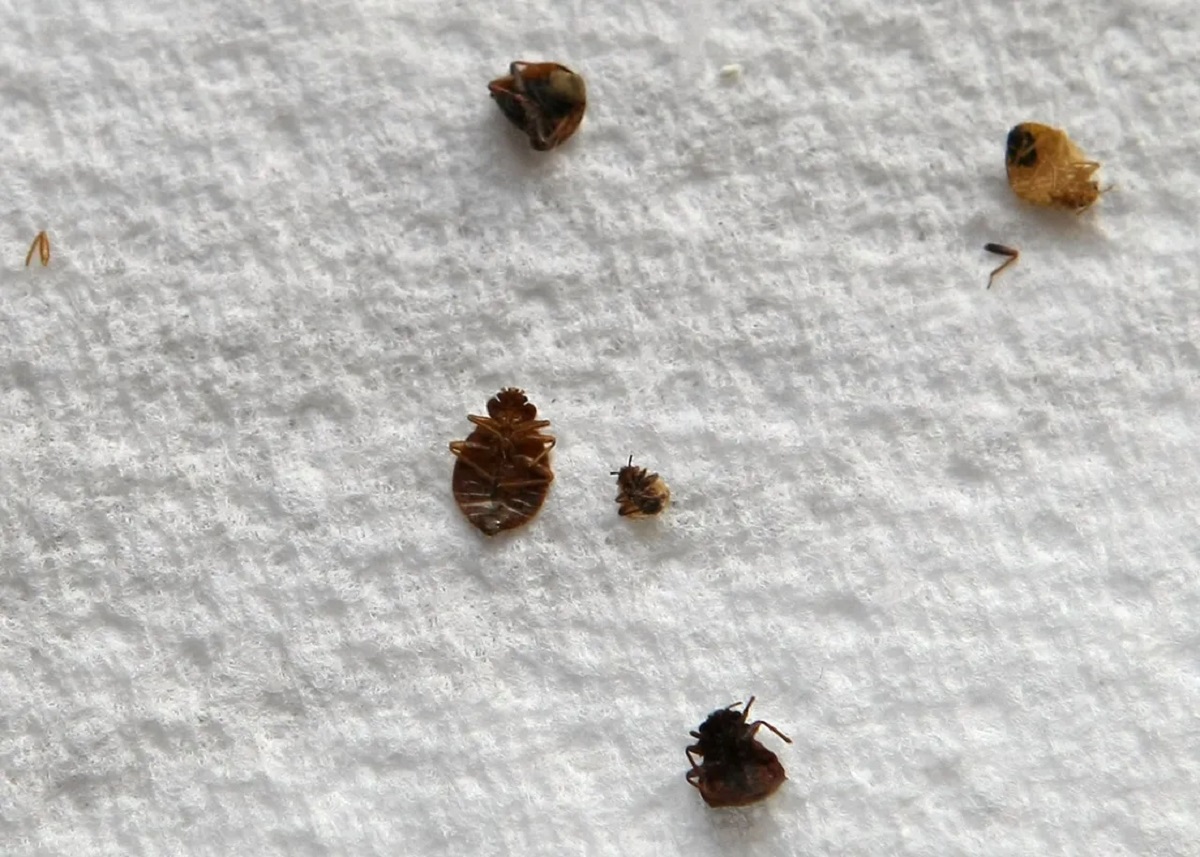Home>Furniture>Bedroom Furniture>How Long Does It Take Bed Bugs To Die
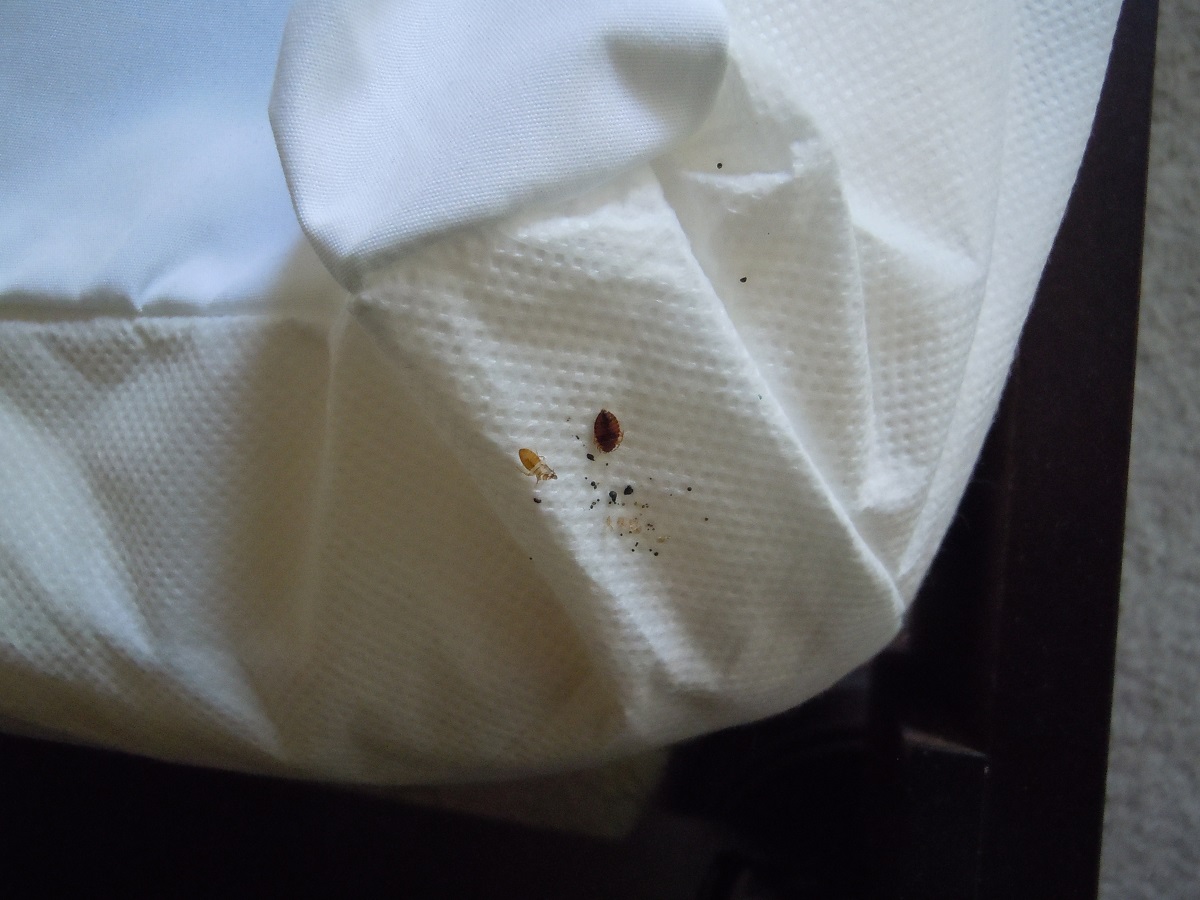

Bedroom Furniture
How Long Does It Take Bed Bugs To Die
Modified: January 9, 2024
Discover how long it takes for bed bugs to die and protect your bedroom furniture with effective strategies. Learn more to prevent infestations and find relief.
(Many of the links in this article redirect to a specific reviewed product. Your purchase of these products through affiliate links helps to generate commission for Storables.com, at no extra cost. Learn more)
Introduction
Welcome to our comprehensive guide on the lifespan of bed bugs. If you are dealing with a bed bug infestation, you may be wondering how long it takes for these pesky creatures to die. In this article, we will explore the factors that influence the lifespan of bed bugs, from eggs to adult bugs, as well as the methods available for extermination.
Bed bugs are small insects that feed on human blood and are notorious for infesting mattresses, furniture, and other areas where people sleep or rest. Their bites can cause itching, discomfort, and even allergic reactions in some individuals. Understanding the lifespan of bed bugs is crucial for effectively managing an infestation and preventing their spread.
To gain a comprehensive understanding of the bed bug lifespan, we will explore the duration of each life stage: adult bed bugs, bed bug eggs, and bed bug nymphs. Additionally, we will discuss the various factors that can influence bed bug mortality and the different methods available for eradicating them.
Dealing with bed bugs can be a frustrating and challenging experience, but with the right knowledge and approach, you can effectively control and eliminate these pests. So, let’s dive into the fascinating world of bed bugs and discover how long they really live.
Key Takeaways:
- Understanding the lifespan of bed bugs is crucial for effective eradication. Factors like temperature, humidity, and access to blood influence their survival, requiring a comprehensive approach to control and eliminate infestations.
- Employing a combination of methods such as insecticide treatment, heat treatment, and professional extermination is necessary for successful bed bug eradication. Prevention through regular inspection and cleaning also plays a key role in minimizing the risk of infestations.
Read more: How Long Does It Take For Bed Bugs To Starve
Factors Affecting Bed Bug Lifespan
Several factors can significantly impact the lifespan of bed bugs. Understanding these factors is crucial for controlling and eradicating infestations. Let’s take a closer look at some of the key determinants:
- Temperature: Bed bugs thrive in warm temperatures, typically between 70 to 80 degrees Fahrenheit. Higher temperatures can speed up their development and reproduction, while lower temperatures, below freezing point, can potentially kill them.
- Humidity: Bed bugs prefer environments with moderate humidity levels. Too much humidity can hinder their ability to molt or breed, while extremely dry conditions can cause dehydration and ultimately lead to their demise.
- Availability of Blood: Bed bugs feed on blood, primarily that of humans. The availability of a host, such as a sleeping person, is crucial to their survival. Without a regular source of blood, bed bugs will struggle to survive and reproduce.
- Access to Hiding Places: Bed bugs are good at hiding and can seek refuge in cracks, crevices, and other hard-to-reach areas. The availability of suitable hiding places can determine how long bed bugs will survive by providing them with protection and shelter.
- Resistance to Insecticides: Over time, bed bugs have developed resistance to many common insecticides used for extermination. This resistance can affect their lifespan, as they may survive exposure to certain chemicals or require multiple treatments to be eliminated.
It is essential to consider these factors when developing a strategy to combat bed bug infestations. By addressing these determinants and understanding their influence on bed bug lifespan, it is possible to enhance the effectiveness of extermination methods and eliminate these pests more successfully.
Lifespan of Adult Bed Bugs
Adult bed bugs are the fully developed stage of the bed bug life cycle. They are approximately the size of an apple seed, have flat bodies, and are reddish-brown in color. Understanding the lifespan of adult bed bugs is crucial for effectively controlling infestations and preventing their spread.
On average, adult bed bugs can live anywhere from four to six months. However, their lifespan can vary depending on various factors such as temperature, feeding frequency, and overall conditions of their environment.
Under optimal conditions, where the temperature ranges between 70 to 80 degrees Fahrenheit and a suitable host is available for regular blood meals, adult bed bugs can survive and reproduce more efficiently. In such circumstances, they can live up to a year or even longer.
During their lifespan, adult bed bugs go through several molting stages where they shed their exoskeletons to grow. After each molt, they become larger and darker in color.
It is important to note that adult bed bugs require regular blood meals to survive and reproduce. Without access to a host, they can still survive for a few months but will eventually die of starvation.
While adult bed bugs can live relatively long lives, their ability to reproduce and increase the infestation size is what makes them particularly worrisome. A female bed bug can lay up to 500 eggs in her lifetime, contributing to the exponential growth of the infestation if left unchecked.
Understanding the adult bed bug lifespan can help determine the urgency and approach in dealing with infestations. Prompt action is crucial to prevent further breeding and the spread of the infestation throughout the living area.
Lifespan of Bed Bug Eggs
Bed bug eggs are an essential part of the bed bug life cycle and can play a significant role in the persistence and growth of an infestation. Understanding the lifespan of bed bug eggs is crucial for effective eradication and prevention strategies.
Bed bug eggs are small, approximately the size of a pinhead, and are often difficult to spot with the naked eye. They are translucent white in color and have an elongated shape.
On average, bed bug eggs can take anywhere from six to ten days to hatch. However, the exact timeframe can vary depending on various factors, including temperature and humidity levels.
Optimal conditions for egg development are between 70 to 80 degrees Fahrenheit and moderate humidity. Under these conditions, bed bug eggs will hatch faster. Lower temperatures and high humidity can extend the incubation period.
Female bed bugs can lay one to five eggs per day, amounting to approximately 200 to 500 eggs during their lifespan. The eggs are usually laid in cracks, crevices, or other hidden areas near their host’s resting places.
Once laid, the eggs are securely attached to surfaces using a sticky substance secreted by the female bed bug. This adhesive ensures that the eggs remain in place and are not easily dislodged.
It is important to note that bed bug eggs are resilient and can withstand various environmental conditions, making them difficult to eliminate. They have a hard outer shell that protects the developing embryo, providing a high level of resistance to common insecticides.
Successful eradication of bed bug infestations requires a comprehensive treatment approach that targets both adult bed bugs and their eggs. Treating only the adult bugs while ignoring the eggs can lead to the resurgence of the infestation once the eggs hatch.
It is crucial to employ effective techniques such as heat treatment, steam cleaning, or targeted insecticide applications to eliminate both adult bed bugs and their eggs. This comprehensive approach maximizes the chances of eradicating the infestation and preventing future re-infestations.
To effectively eliminate bed bugs, it can take anywhere from a few days to several weeks, depending on the treatment method used and the severity of the infestation. It’s important to be patient and thorough in your approach to ensure complete eradication.
Lifespan of Bed Bug Nymphs
Bed bug nymphs are the immature stages of bed bugs that hatch from the eggs. They undergo several molting stages before reaching adulthood. Understanding the lifespan of bed bug nymphs is crucial for effective control and eradication of infestations.
After hatching, bed bug nymphs are small and translucent. They resemble adult bed bugs but are smaller in size and lighter in color. Nymphs go through five molting stages, known as instars, before reaching adulthood.
The duration of each nymph stage can vary depending on various factors, primarily the availability of consistent blood meals. Each nymph stage requires a blood meal to molt and progress to the next stage. Without access to blood, the development of nymphs can be delayed or halted.
Under favorable conditions, bed bug nymphs can complete their development and reach adulthood in approximately five to six weeks. However, the timeline can be significantly extended if conditions are suboptimal or if regular meals are not available.
During each molt, the nymph sheds its exoskeleton to accommodate its growth. After molting, the nymph appears slightly larger and darker in color. The shedding of exoskeletons is a vulnerable period for nymphs, making them more susceptible to extermination methods.
Unlike adult bed bugs, nymphs are not capable of reproducing. Their sole focus is on feeding, growing, and molting until they reach the adult stage. However, nymphs can still inflict bites and cause discomfort to individuals who come into contact with them.
The lifespan of bed bug nymphs is directly influenced by the availability of blood meals and their ability to molt and progress through the instars. Eliminating nymphs is crucial for preventing the growth of infestations and reducing the chances of adult bed bug reproduction.
To effectively control bed bug infestations, it is important to employ a multi-faceted approach that targets both nymphs and adult bed bugs. Combining methods such as thorough cleaning, vacuuming, steam treatment, and targeted insecticide applications can help eradicate nymphs and break the bed bug life cycle.
By understanding the lifespan of bed bug nymphs, you can implement appropriate strategies to disrupt their growth and effectively eliminate infestations.
Read more: How Long Does It Take To Notice Bed Bugs
Factors Influencing Bed Bug Mortality
Several factors can influence the mortality of bed bugs. These factors play a crucial role in determining the success of extermination efforts. Let’s dive into some of the key factors that affect bed bug mortality:
- Insecticides: The type and effectiveness of the insecticides used can greatly impact bed bug mortality. Bed bugs have developed resistance to many common insecticides, so it’s important to use products specifically designed for bed bug control or seek professional help.
- Exposure to Heat: Bed bugs are sensitive to high temperatures. Heat treatment can be effective in killing bed bugs at all life stages, including eggs, nymphs, and adults. Exposing them to temperatures above 120 degrees Fahrenheit for an extended period can lead to their demise.
- Physical Removal: Removing bed bugs physically, through techniques such as vacuuming or steam cleaning, can significantly reduce their numbers. It’s important to dispose of the captured bugs properly to prevent their reinfestation.
- Professional Expertise: Seeking professional help from pest control experts can greatly increase the chances of eliminating bed bugs. Professionals have the knowledge, experience, and access to effective treatments to optimize the extermination process.
- Timing and Persistence: Addressing a bed bug infestation as soon as it’s detected is crucial. The longer the infestation persists, the more challenging it becomes to eradicate them completely. Persistent and consistent treatment is necessary to ensure all bed bugs and their eggs are eliminated.
- Environmental Conditions: Bed bugs thrive in certain environmental conditions. Maintaining a clean and clutter-free living space can discourage bed bugs from establishing themselves. Regular laundering of bedding and vacuuming can also help reduce their population.
It’s important to note that individual variations and unique circumstances can also influence bed bug mortality rates. Factors such as the size of the infestation, the level of bed bug resistance, and the thoroughness of treatment all play a role in determining the overall success of eradication efforts.
Effective bed bug control requires a comprehensive approach that combines multiple strategies to target bed bugs at different life stages. By considering these factors and implementing appropriate measures, it is possible to minimize bed bug populations and eventually eliminate them from your living space.
Methods for Killing Bed Bugs
Dealing with a bed bug infestation requires prompt and effective action. There are several methods available for killing bed bugs, and a combination of these methods is often necessary to achieve complete eradication. Let’s explore some of the most common techniques:
- Insecticide Treatment: Insecticides specifically formulated for bed bug control are commonly used by professionals and homeowners. These insecticides come in various forms, including sprays, dusts, and aerosols. It’s important to follow the instructions carefully and ensure proper application to maximize effectiveness.
- Heat Treatment: Heat treatment involves raising the temperature of the infested area to lethal levels for bed bugs. This method is effective in killing bed bugs at all life stages, including eggs, nymphs, and adults. Professional heat treatments can ensure the entire area reaches the required temperature for a sufficient duration.
- Steam Treatment: Steam cleaning can be used to kill bed bugs on contact. The high temperature of the steam effectively eliminates bed bugs by damaging their bodies. It’s important to be thorough and target areas where bed bugs are likely to hide, such as seams, cracks, and crevices.
- Vacuuming: Vacuuming is an effective method for physically removing bed bugs and reducing their population. Be sure to use a vacuum with a HEPA filter to prevent bed bugs from escaping and dispose of the vacuum bag or contents in a sealed plastic bag promptly.
- Freezing: Extreme cold temperatures can also kill bed bugs. Items that can tolerate freezing temperatures, such as clothing or bedding, can be placed in a freezer for several days to eliminate any bed bugs present.
- Encasement: Mattress and box spring encasements can be used to trap bed bugs and prevent them from feeding or escaping. Encasements create a barrier that restricts bed bugs’ movement and makes it easier to spot and eliminate any remaining bugs.
- Professional Extermination: In severe infestations or when DIY methods have been unsuccessful, it is advisable to seek professional help. Pest control professionals have the expertise, experience, and access to specialized treatments to effectively eliminate bed bugs.
Regardless of the method used, it is essential to be thorough and persistent. Treating only the visible signs of bed bugs may not be enough, as they can hide in various hiding spots. A comprehensive approach that targets all stages of the bed bug life cycle, including eggs, nymphs, and adults, is necessary for effective eradication.
It’s also important to remember that prevention is key in preventing future infestations. Regularly inspecting and cleaning your living space, practicing good hygiene, and taking precautionary measures when traveling can help reduce the risk of bed bug encounters.
By employing these methods and taking proactive measures, you can successfully eliminate bed bugs and regain control over your living environment.
Conclusion
Bed bug infestations can be a nightmare to deal with, but with the right knowledge and techniques, you can effectively rid your home of these persistent pests. In this comprehensive guide, we have explored the lifespan of bed bugs at each stage of their development and discussed the factors that influence their mortality. We have also delved into various methods for killing bed bugs.
Understanding the lifespan of bed bugs is crucial for implementing effective strategies to eradicate them. Adult bed bugs can live up to several months, while their eggs can hatch within a week. Bed bug nymphs go through several molting stages before reaching adulthood, and their lifespan depends on factors such as access to blood meals and suitable environmental conditions.
Factors influencing bed bug mortality include the use of effective insecticides, exposure to high temperatures through heat treatments or steam cleaning, physical removal methods like vacuuming, seeking professional expertise, timing and persistence in treatment, and creating unfavorable environmental conditions through consistent cleaning and clutter reduction.
When it comes to killing bed bugs, a combination of methods is often necessary for successful eradication. Insecticides, heat treatments, steam cleaning, vacuuming, freezing, and encasement can all contribute to eliminating bed bugs at different life stages and their hiding spots. In severe infestations or cases of resistance, seeking professional help is advisable.
However, prevention remains the best defense against bed bugs. Regular inspection and cleaning of your living space, practicing good hygiene, and taking precautions when traveling can help minimize the risk of encounters with these pests. Early detection and prompt action are crucial for preventing infestations from spreading and becoming more challenging to control.
In conclusion, by understanding the bed bug life cycle, factors influencing their mortality, and employing effective methods for extermination, you can successfully eliminate bed bugs from your home and regain peace of mind. Remember, persistence and thoroughness are key to addressing an infestation successfully. With the right approach, you can reclaim your space and sleep soundly knowing that the bed bugs are no longer a concern.
Frequently Asked Questions about How Long Does It Take Bed Bugs To Die
Was this page helpful?
At Storables.com, we guarantee accurate and reliable information. Our content, validated by Expert Board Contributors, is crafted following stringent Editorial Policies. We're committed to providing you with well-researched, expert-backed insights for all your informational needs.
